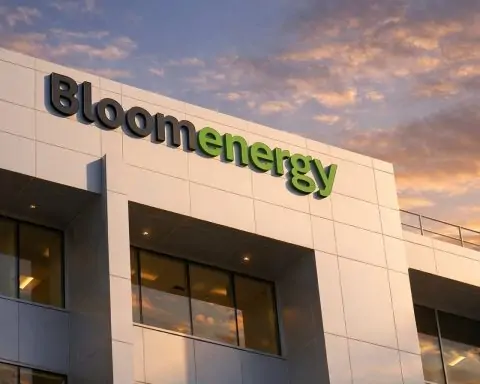- Wasted Wind: Octopus Energy’s new live tracker shows nearly £650 million paid out in 2025 to wind farms forced to shut off, well over half again what was wasted by mid-2024 [1].
- Curtailment Causes: Grid bottlenecks – especially from wind farms in remote Scotland – mean turbines idle up to 70% of the time (e.g. the 1.1 GW Seagreen offshore farm) [2], inflating wind’s true cost and firing up costly gas plants instead.
- Consumer Hit: CEOs and analysts warn this “pay-to-stop” system is driving up bills. Octopus CEO Greg Jackson calls it a “racket”: UK bill payers have already shelled out about £1 billion since January 2025 to idle wind, plus another £1.2 billion in 2024 [3]. Think-tank Carbon Tracker estimates these payments add roughly £40 a year to each household bill [4].
- Systemic Flaw: National grid operator NESO projects constraint costs will hit £8 billion per year by 2030 [5] [6]. Octopus warns that unless urgent market and infrastructure reforms are made, wasted renewables will keep prices high.
- Octopus’ Campaign: To spotlight the problem, Octopus launched a “Wasted Wind Ticker” on its homepage, visible to millions. The tracker tallies in real time how much taxpayer money is being frittered away turning off turbines and ramping up fossil generation [7]. As Head of Customer Experience Pete Miller quips: “It’s crazy to build wind farms where there’s no grid, then pay them to sit idle” [8].
- Proposed Fixes: Octopus (backed by its founder Greg Jackson) is pushing zonal pricing (regional electricity prices based on local supply and demand) and faster grid connections. It argues this could save tens of billions and thousands of miles of new pylons [9]. Meanwhile Ofgem has fast‑tracked “super‑battery” storage schemes to soak up excess wind power and cut curtailment costs [10] [11]. Other ideas include converting excess power into hydrogen on‑site in Scotland [12].
- Octopus in the Market: Octopus Energy, founded in 2016, is now Britain’s largest household energy supplier (about 24% market share) [13] and serves over 12 million accounts [14]. It has become a global tech-powered player: its Kraken software (licenced to EDF, E.ON, Origin Energy, etc.) is being spun off as a separate company (likely valued around £10–15 billion [15] [16]). Industry watchers note Octopus’s focus on innovation (smart tariffs, EV charging, renewables investment) drives its growth.
Octopus’s campaign has thrust the curtailment problem into the spotlight. Greg Jackson bluntly told The Independent that wind farm owners (some of whom also run gas plants) “realise there is a bunch of generators…that won’t get to market because of grid congestion, so they pay them anyway, and then they find someone else to fill the gaps” [17]. In other words, billpayers fund idle wind farms and pricey backup power – a situation Jackson labels “a racket” [18] [19]. He illustrated it like “building a factory where there [are] no roads and then being paid for what you might have produced if there had been roads” [20].
The scale of the waste is startling. Octopus’s own press release notes the UK’s largest wind farm (Seagreen) is paid not to generate 71% of the time – making each unit of its electricity effectively four times more expensive [21]. By July 2025 consumers had already paid ~£650 m to shut turbines down and fire up gas stations instead [22] (a cost that industry estimates will rise to £8bn annually by 2030 [23] [24]). Carbon Tracker warns that curtailment added about £40 to the average UK household’s bill in 2023 [25], and upcoming regulatory changes (like the October 2025 price cap rise) will pile on more costs.
Why does this happen? The UK uses a single wholesale price nationwide, even though supply and demand are geographically uneven. Northern Scotland has hugely more wind power than local demand; the grid simply can’t always carry that juice south. When demand is low or lines are full, National Grid ESO (formerly called NESO) orders wind farms to throttle back, paying them constraint payments for “lost” output. In 2024 those payments topped £1 billion [26], and the July 2025 Sky News piece noted wind turbines are “routinely paid not to produce” [27] due to these grid constraints. (A consumer watchdog points out that gas plants have to spin up in the south to meet demand, nullifying the carbon benefit of local wind.)
Octopus is not alone in calling for change. Industry experts and even government voices say the current system is unsustainable. Octopus’s founder highlights zonal pricing: breaking Britain into price regions, as much of Europe already does, so that energy costs reflect where it’s generated and used. Octopus argues zonal pricing could “cut the need for tens of thousands of new pylons, saving £27 billion” [28], and sharply lower Scottish energy prices (while loosening south-east demand pressure) [29]. Critics of change (including Energy Secretary Ed Miliband) have so far kept the single-price regime, but Jackson warns we’ll keep paying a premium until we align prices with grid reality.
Meanwhile, alternative fixes are underway. Ofgem recently announced a bill-payer funded program for long-duration storage projects – “super-batteries” of lithium, flow, pumped hydro, even sugar-based systems [30]. The goal is to store surplus renewables when they overwhelm the grid and discharge it later. As Ofgem’s Major Projects boss put it: “We don’t want to see a single watt go to waste” [31]. Likewise, local politicians suggest harnessing curtailed wind via green hydrogen: instead of idling turbines, run electrolysers and pipe energy as hydrogen through existing networks [32].
Octopus Energy itself exemplifies the new-wave supplier trying to fix these issues. It has become the UK’s biggest supplier by “relentlessly” prioritising tech and green investment [33]. Its Octopus Energy Generation arm manages a multi‑billion‑pound renewable portfolio (onshore, offshore, solar, storage) across Europe. Zoisa North-Bond, CEO of Octopus Generation, frequently pushes for faster grid connections; her 2023 report “End the Gridlock” outlined practical reforms (queue-jumping, sunset clauses, collaboration) to unlock 200+ GW of queued renewables [34] [35]. Octopus is also expanding wind capacity: in September 2025 it announced a partnership with Chinese turbine-maker Ming Yang to install new turbines under its “Winder” community matching scheme [36]. On storage, Octopus’s development fund has invested in building Britain’s largest battery (500 MW/1 GWh) [37] to balance future supply.
Technology plays a key role. Octopus’s proprietary Kraken platform – a data-driven billing and grid-management system – underpins its growth. Kraken already manages over 70 million customer accounts worldwide (supplying rivals like EDF, E.ON, Tokyo Gas, Origin Energy, etc.) and is being spun off as its own company [38] [39]. Industry reports suggest Kraken could command a valuation near £10–15 billion in a minority sale [40] [41], reflecting Octopus’s aim to solve energy problems with software intelligence.
Octopus’s transparency push is notable. The “Wasted Wind Ticker” now appears on millions of Octopus bills and its mobile app, explicitly itemizing how much constraint costs have drained customers’ money [42]. As Pete Miller puts it, Octopus told customers “the energy crisis was caused by the cost of gas, and now we need to be clear that high electricity prices are the cost of a broken energy system” [43]. By openly publishing these figures, Octopus hopes to galvanize public support for reform.
The bigger picture: Britain’s electricity bills have long been high by global standards (higher even than Germany’s) [44]. In many European markets, when renewables overproduce, prices can even turn negative, discouraging unnecessary generation. The UK’s “gridlock” is a structural hangover: an ageing network built for a fossil age, coupled with marginal-pricing rules that let gas plants set all prices [45]. But with climate targets demanding more wind, experts warn the status quo won’t last. The National Grid’s own modelling sees constraint costs rising drastically as new wind projects come online [46]. Unless zones, wires, or storage solutions keep pace, consumers will keep footing the bill for idle clean power.
For its part, Octopus Energy – now serving the most UK homes of any supplier [47] – is betting that customer-focused innovation is the answer. By shining a spotlight on wasted wind and investing in storage, hydrogen, and smarter markets, the company is pressuring regulators and rivals to wake up. As Octopus founder Greg Jackson warns: “We shouldn’t let a handful of highly profitable giants…keep an increasingly expensive, broken system in place” [48]. With Octopus “unmasking” these hidden costs (and even serving 12.9 million accounts [49]), the debate over how to fix Britain’s grid has finally hit prime time.
Sources: Industry news and reports from Octopus Energy, Sustainability Magazine, The Independent, Sky News, Reuters, Solar Power Portal and others [50] [51] [52] [53] [54] [55]. These detail Octopus’s waste tracker, expert commentary, and the growing costs and proposed remedies for Britain’s wind curtailment challenge.
References
1. octopus.energy, 2. octopus.energy, 3. www.the-independent.com, 4. www.the-independent.com, 5. octopus.energy, 6. www.the-independent.com, 7. octopus.energy, 8. octopus.energy, 9. sustainabilitymag.com, 10. news.sky.com, 11. news.sky.com, 12. www.johnogroat-journal.co.uk, 13. www.solarpowerportal.co.uk, 14. www.solarpowerportal.co.uk, 15. www.reuters.com, 16. news.sky.com, 17. www.the-independent.com, 18. www.the-independent.com, 19. www.the-independent.com, 20. www.the-independent.com, 21. octopus.energy, 22. octopus.energy, 23. octopus.energy, 24. www.the-independent.com, 25. www.the-independent.com, 26. news.sky.com, 27. news.sky.com, 28. sustainabilitymag.com, 29. www.the-independent.com, 30. news.sky.com, 31. news.sky.com, 32. www.johnogroat-journal.co.uk, 33. www.solarpowerportal.co.uk, 34. octopus.energy, 35. octopus.energy, 36. www.reuters.com, 37. octopus.energy, 38. www.reuters.com, 39. news.sky.com, 40. www.reuters.com, 41. news.sky.com, 42. octopus.energy, 43. octopus.energy, 44. theweek.com, 45. theweek.com, 46. www.the-independent.com, 47. www.solarpowerportal.co.uk, 48. sustainabilitymag.com, 49. www.solarpowerportal.co.uk, 50. octopus.energy, 51. www.the-independent.com, 52. www.the-independent.com, 53. news.sky.com, 54. www.reuters.com, 55. www.solarpowerportal.co.uk










